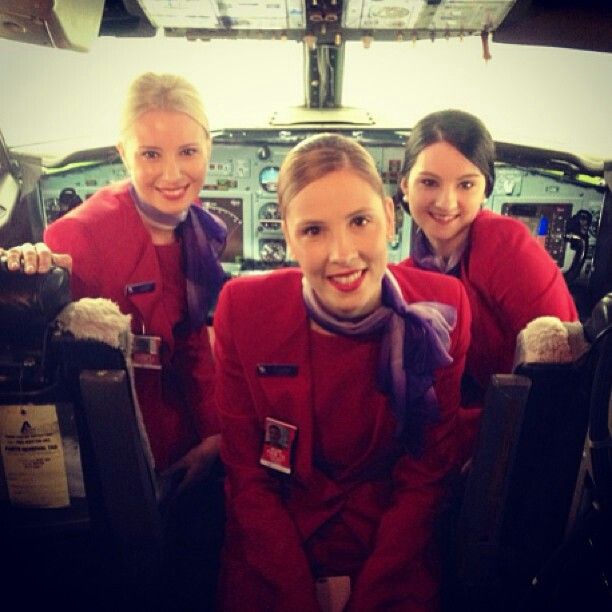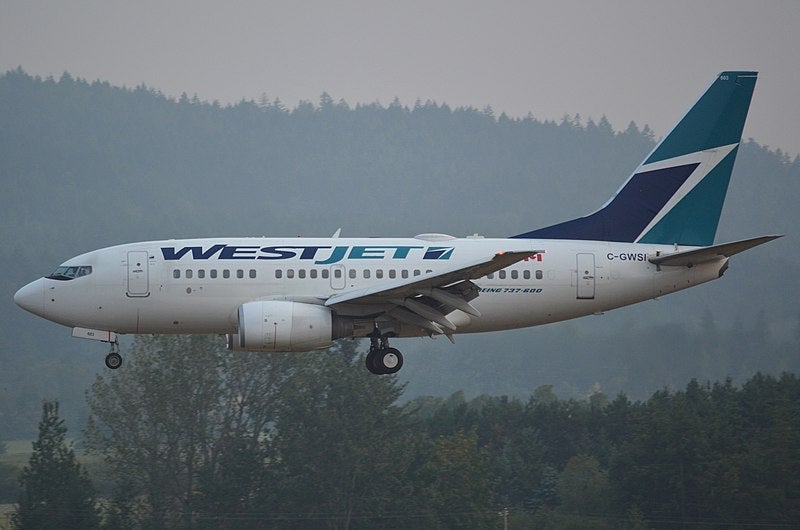From Cabin Crew To Cockpit: One Woman's Transition From Flight Attendant To Pilot

Table of Contents
The Seeds of Aspiration: From Flight Attendant to Pilot Dreams
My initial motivation for becoming a flight attendant was simple: a love of travel and a desire to be part of the aviation world. I loved the idea of exploring new places and meeting diverse people. However, the real seed of my aspiration to become a pilot was sown during my early days as a flight attendant. Witnessing the skill and professionalism of the pilots, the intricate dance of aviation technology, and the sheer responsibility of safely navigating a massive aircraft ignited a new passion within me.
The advantages of starting as a flight attendant in this journey are significant. Being immersed in the aviation industry provided invaluable experience:
- Exposure to various aircraft types and airline operations: I gained a deep understanding of different aircraft models, their functionalities, and the complexities of airline operations, from ground handling to air traffic control.
- Building relationships with pilots and crew members: Networking with pilots provided mentorship, guidance, and invaluable insights into the pilot training process and career path. These connections proved vital throughout my transition.
- Gaining firsthand experience in aviation safety and procedures: My flight attendant training instilled a deep understanding of safety regulations and emergency procedures, a foundation that proved incredibly beneficial during my pilot training.
Overcoming Obstacles: The Challenges of Transitioning Careers
Transitioning from a flight attendant to a pilot wasn't without significant hurdles. The financial burden of flight training while maintaining a full-time job was immense. Finding the time to balance flight school with my regular work schedule was incredibly demanding, requiring meticulous planning and unwavering dedication. And let's not forget the mental and emotional challenges – the pressure of learning a complex and demanding skillset, coupled with the potential for setbacks, tested my resilience.
Overcoming these challenges required careful planning and strategic approaches:
- Securing funding for flight training: I explored various options, including personal loans, scholarships specifically designed for aspiring pilots, and even a carefully managed savings plan alongside my flight attendant income.
- Creating a realistic training schedule: I meticulously planned my flight school schedule, working closely with my instructors and my airline to minimize conflicts and maximize efficiency.
- Building resilience and coping with setbacks: Learning to manage stress, overcome setbacks, and maintaining a positive attitude throughout the process was crucial for my success. This is, without doubt, the most important lesson that aided the transition from flight attendant to pilot.
The Flight Training Journey: From Flight Attendant to Certified Pilot
My flight training journey was a whirlwind of ground school theory, simulator training, and countless flight hours. Ground school focused on meteorology, navigation, aerodynamics, and aviation regulations. Simulator training helped me hone my skills in various scenarios, from normal operations to emergency situations. And of course, there were many hours spent in the air, building my proficiency and accumulating flight hours. The challenges were immense, from mastering complex maneuvers to handling unexpected weather conditions, but each success fueled my determination.
My training included:
- Types of training completed: Instrument rating, Commercial Pilot License (CPL), and Multi-Engine Instrument Rating (MEIR).
- Number of flight hours accumulated: Over 1500 hours of flight time.
- Memorable experiences: The first solo flight, landing in challenging weather conditions, and the sheer satisfaction of passing my final exams.
Leveraging Existing Skills: The Flight Attendant Advantage
My background as a flight attendant proved invaluable during my pilot training. The knowledge I already had regarding aviation regulations, safety procedures, and customer service greatly enhanced my piloting skills.
- Improved understanding of aviation regulations: My prior experience expedited my understanding of regulatory compliance and safety procedures, allowing me to focus more intensely on the technical aspects of piloting.
- Enhanced situational awareness and risk management skills: Working as a flight attendant sharpened my awareness of potential hazards and the need for proactive risk management, crucial skills for a pilot.
- Superior communication and customer service skills: These skills translated seamlessly to pilot-passenger interactions and crew coordination. The ability to calmly communicate effectively is absolutely essential in this transition.
Soaring to New Heights: Life as a Pilot (Post-Transition)
Today, I'm a proud commercial pilot flying regional jets. While there are significant differences between being a flight attendant and a pilot, both roles share a commitment to safety and a passion for aviation. The responsibility and the feeling of commanding an aircraft is immensely rewarding. However, the challenges remain. Long hours, challenging weather conditions, and the constant need to maintain a high level of vigilance are all part of the experience.
My experiences as a pilot include:
- Type of aircraft flown: Regional jets, serving various routes across the country.
- Favorite aspects of the job: The constant challenge, the amazing views, and the feeling of accomplishment at the end of a successful flight.
- Challenges encountered: Dealing with challenging weather, managing demanding schedules, and the constant need for precise execution.
Conclusion
My journey from flight attendant to pilot has been a testament to dedication, hard work, and unwavering perseverance. It’s a journey that’s incredibly rewarding, but demands commitment, resilience, and a well-structured plan. Starting as a flight attendant provided a unique advantage, offering invaluable experience and insight into the aviation world. This experience smoothed my transition to the cockpit, showcasing the importance of leveraging existing knowledge and connections. If you dream of flying, don't let your current career path deter you. Begin your journey from flight attendant to pilot today! Is a career transition from flight attendant to pilot right for you? Learn how to make the transition from flight attendant to pilot and turn your aviation dreams into reality.

Featured Posts
-
 Ufc 315 Muhammad Vs Della Maddalena Prediction And Best Betting Odds
May 12, 2025
Ufc 315 Muhammad Vs Della Maddalena Prediction And Best Betting Odds
May 12, 2025 -
 Will Aaron Judge Get His Way Analyzing The Yankees Lineup Decisions
May 12, 2025
Will Aaron Judge Get His Way Analyzing The Yankees Lineup Decisions
May 12, 2025 -
 Assessing The Fallout Public Response To Thomas Muellers Potential Bayern Exit
May 12, 2025
Assessing The Fallout Public Response To Thomas Muellers Potential Bayern Exit
May 12, 2025 -
 Foreign Airlines Acquire 25 Of West Jet Onex Exits With Full Return
May 12, 2025
Foreign Airlines Acquire 25 Of West Jet Onex Exits With Full Return
May 12, 2025 -
 Mauricio Ruffys Spinning Kick Preparing For Ufc 313
May 12, 2025
Mauricio Ruffys Spinning Kick Preparing For Ufc 313
May 12, 2025
Latest Posts
-
 A Look Back Jessica Simpsons Comeback Performance After 15 Years
May 12, 2025
A Look Back Jessica Simpsons Comeback Performance After 15 Years
May 12, 2025 -
 Jessica Simpson And Eric Johnson Co Parenting And Friendship Following Separation
May 12, 2025
Jessica Simpson And Eric Johnson Co Parenting And Friendship Following Separation
May 12, 2025 -
 Jessica Simpsons Post Hiatus Performance A Fan Celebration
May 12, 2025
Jessica Simpsons Post Hiatus Performance A Fan Celebration
May 12, 2025 -
 Dzhessika Simpson I Ee Put K Stroynosti Insayderskaya Informatsiya
May 12, 2025
Dzhessika Simpson I Ee Put K Stroynosti Insayderskaya Informatsiya
May 12, 2025 -
 Kak Dzhessika Simpson Dobilas Vpechatlyayuschego Rezultata V Pokhudenii
May 12, 2025
Kak Dzhessika Simpson Dobilas Vpechatlyayuschego Rezultata V Pokhudenii
May 12, 2025
